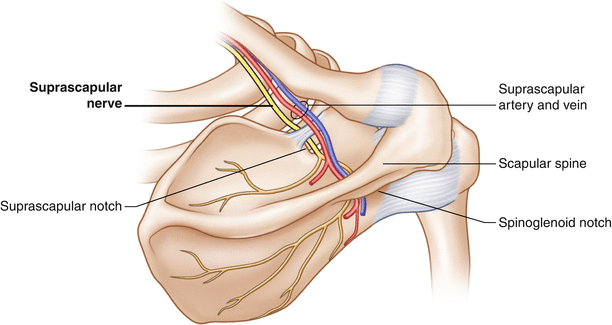- Home
- Arthroscopic Suprascapular Nerve Release
Arthroscopic Suprascapular Nerve Release
SUPRASCAPULAR NERVE
Suprascapular nerve is a mixed (sensory and motor) nerve that arises from the upper trunk of the brachial plexus. The nerve travels through the suprascapular notch beneath the superior transverse scapular ligament (STSL) of the shoulder and supplies the supraspinatus and infraspinatus muscles. The primary function of these muscles is to help arm movements at the shoulder joint.
Any injury or compression of the suprascapular nerve results in suprascapular neuropathy.

SUPRASCAPULAR NERVE DECOMPRESSION
Suprascapular nerve is a mixed (sensory and motor) nerve that arises from the upper trunk of the brachial plexus. The nerve travels through the suprascapular notch beneath the superior transverse scapular ligament (STSL) of the shoulder and supplies the supraspinatus and infraspinatus muscles. The primary function of these muscles is to help arm movements at the shoulder joint.
Any injury or compression of the suprascapular nerve results in suprascapular neuropathy.
Suprascapular Neuropathy is a condition of shoulder pain associated with weakness. It is a common problem in overhead athletes who perform repetitive overhead motions or throwing such as swimming, volley ball, tennis, and weightlifting.
Arthroscopic Suprascapular Nerve Decompression is a minimally invasive surgical technique performed to release the compressed suprascapular nerve
BOOK AN APPOINTMENT
You Don't Have To Live With Pain
Dr. Rahul Bade is a specialist Knee & Shoulder Surgeon.
Indications
- Chronic shoulder pain and weakness
- Atrophy of the shoulder muscles
- Failed conservative treatment measures
Surgical procedure
The purpose of the surgery is to relieve shoulder pain by nerve decompression.
Suprascapular Nerve Decompression can be performed surgically with an arthroscopic technique under general anesthesia.
Arthroscope is a small fiber-optic viewing instrument made up of a tiny lens, light source and a video camera. The camera attached to the arthroscope displays the image of the joint on a monitor, allowing the surgeon to view the nerve and ligament.
The approach for surgery is from the front (anterior) aspect of the shoulder. The surgeon makes small incisions on the top of the shoulder. In one incision, the arthroscope is introduced to view the suprascapular nerve, artery and STSL. Other portal is used for the insertion of surgical instruments. The surgeon dissects the nerve and artery from the STSL. The ligament is sectioned and the nerve is decompressed.
The benefits of arthroscopy are smaller incisions, faster healing, a more rapid recovery, shorter rehabilitation period, and less scarring. It is often performed on an outpatient basis and the patient is able to return home on the same day.
It is much less traumatic to the muscles, ligaments and tissues than the traditional method of surgically opening the shoulder with long incisions (open techniques).
After the surgery
Following the surgery, your surgeon may recommend you follow certain measures for a successful outcome:
- Your doctor will prescribe medications to relieve pain.
- Appling ice-packs wrapped in a towel over the operated area for about 20 minutes, 3-4 times a day helps reduce post-operative swelling.
- You will have to wear a shoulder sling for 2-3 weeks following surgery.
- Keep a pillow under the operated arm while sleeping to support the shoulder.
- Your surgeon will develop a rehabilitation program after surgery to improve the shoulder strength and range of motion.
- Return to normal activities once you feel comfortable and a follow-up appointment should be scheduled 8-10 days after surgery to examine your progress.
Complications include infection, bleeding, damage to nerve or blood vessel or delayed healing after the surgery.
Dr. Rahul Bade is an Arthroscopy Surgeon in Pune with extensive experience in arthroscopic suprascapular nerve release. He specialized in treating conditions such as shoulder impingement, rotator cuff tears, labral tears, and frozen shoulder. Dr. Bade is highly skilled in minimally invasive arthroscopic procedures and has a successful track record of treating patients with complex shoulder injuries. He is well-versed in evaluating and treating shoulder injuries with advanced arthroscopic techniques, such as arthroscopic suprascapular nerve release, to help his patients return to their active lifestyles.


